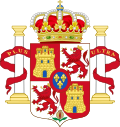Sources
- Castedo, Leopoldo (1954). Resumen de la Historia de Chile de Francisco Antonio Encina (in Spanish). Vol. 2. Santiago, Chile: Empresa Editora Zig-Zag.
- Encina, Francisco Antonio (1940–1952). Historia de Chile: desde la prehistoria hasta 1891 (in Spanish). Vol. I–XX. Santiago, Chile: Editorial Nascimento.
- Guarda, Gabriel (1978). El Auge Fundacional. Historia urbana del Reino de Chile (in Spanish). Santiago, Chile: Editorial Andrés Bello.
- Medina, José Toribio (1906). Diccionario Biográfico Colonial de Chile (PDF) (in Spanish). Santiago, Chile: Imprenta Elziviriana. pp. 383–384 of 1006.
- Molina, Juan Ignacio (1809). The Geographical, Natural, and Civil History of Chili. Vol. II. London, UK: Longman, Hurst, Rees, and Orme.
